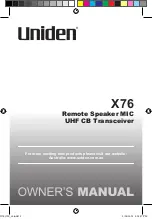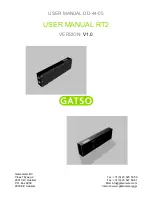
68 |
Channel charts |
V60 User Guide
pollution operations in local areas, under the conditions specified in
Nos.
51.69
,
51.73
,
51.74
,
51.75
,
51.76
,
51.77
and
51.78
.
i) The preferred first three frequencies for the purpose indicated in
Note
a)
are 156.450 MHz (channel 09), 156.625 MHz (channel 72) and
156.675 MHz (channel73).
j) Channel 70 is to be used exclusively for digital selective calling for
distress, safety and calling.
k) Channel 13 is designated for use on a worldwide basis as a
navigation safety communication channel, primarily for intership
navigation safety communications. It may also be used for the ship
movement and port operations service subject to the national
regulations of the administrations concerned.
l) These channels (AIS 1 and AIS 2) are used for an automatic
identification system (AIS) capable of providing world wide
operation, unless other frequencies are designated on a regional
basis for this purpose. Such use should be in accordance with the
most recent version of Recommendation ITU-RM.1371. (WRC-07)
m) These channels may be operated as single frequency channels,
subject to coordination with affected administrations. The following
conditions apply for single frequency usage:
•
The lower frequency portion of these channels may be operated
as single frequency channels by ship and coast stations.
•
Transmission using the upper frequency portion of these channels
is limited to coast stations.
•
If permitted by administrations and specified by national
regulations, the upper frequency portion of these channels may
be used by ship stations for transmission. All precautions should
be taken to avoid harmful interference to channels AIS 1, AIS 2,
2027* and 2028*. (WRC-15)
* From 1 January 2019, channel 2027 will be designated ASM 1
and channel 2028 will be designated ASM 2.
n) With the exception of AIS, the use of these channels (75 and 76)
should be restricted to navigation-related communications only
and all precautions should be taken to avoid harmful interference to
channel 16, by limiting the output power to1W. (WRC-12)
o) (SUP - WRC-12)
p) Additionally, AIS 1 and AIS 2 may be used by the mobile-satellite
service (Earth-to-space) for the reception of AIS transmissions from
ships. (WRC-07)
q) When using these channels (10 and 11), all precautions should be
taken to avoid harmful interference to channel70. (WRC-07)















































